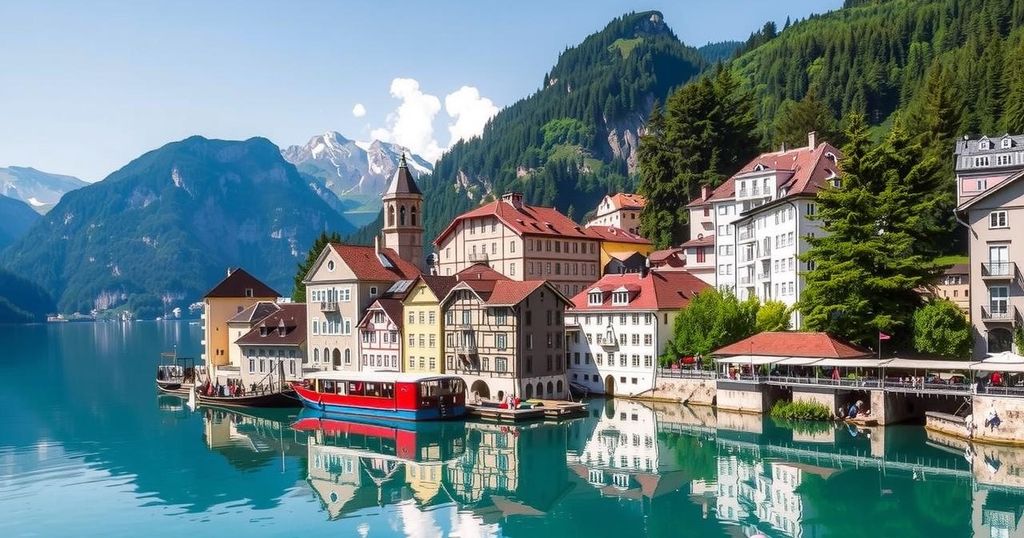Austria’s Tourism Growth: Key Markets and Economic Stability Amid Challenges

Austria is increasingly recognized as an attractive travel destination, supported by recent reports highlighting the role of countries such as Chile, Brazil, Argentina, Canada, Mexico, and the US in driving tourism through visa-free access. Despite a decline in international tourist arrivals in September 2024, Austria’s economic forecasts suggest stability and resilience, bolstered by its strategic location and diverse transportation network.
Austria is gaining attention as a premier travel destination, driven by its stunning alpine landscapes and rich cultural heritage. A recent report indicates that countries such as Chile, Brazil, Argentina, Canada, Mexico, and the United States are included among the ninety-three nations benefiting from visa-free travel to Austria. This reflects Austria’s global appeal and accessibility, as it successfully combines tradition with modernity, showcasing cities like Vienna and Salzburg that attract visitors with their distinctive cultural and historical significance.
Despite its allure, Austria’s tourism sector faced challenges in September 2024, with a notable 9.9 percent decrease in international tourist arrivals compared to September 2023, resulting in approximately 2.5 million visitors that month. This decline highlights a shift in travel patterns and suggests the need for strategic initiatives to sustain and enhance Austria’s stature as a leading tourism destination. As tourism recovers, maintaining its attractiveness remains crucial.
Economically, Austria is showing resilience in 2024, with forecasts estimating a nominal GDP of $535 billion and a GDP per capita of $58,668.6. These figures signify a strong economic foundation, buoyed by diverse industries and a significant export sector. Austria’s strategic location within Europe, along with its active participation in the EU since 1995, further enhances its role as a critical player in the global economy.
Austria’s tourism infrastructure is bolstered by prominent airlines such as Austrian Airlines, Ryanair, and Wizz Air, which facilitate connections to major global cities, thereby supporting the influx of visitors. Furthermore, Austria features a well-connected network of airports, enhancing travel potential with world-class facilities and services.
As a favored travel destination, Austria marvelously weaves together outdoor adventure and cultural refinement, offering visitors endless opportunities to engage with its natural beauty while experiencing the grandeur of its cities. Noteworthy attractions like Stift Melk and Schloss Ambras exemplify the rich cultural tapestry of Austria, appealing to both nature enthusiasts and culture seekers alike.
Austria, located in south-central Europe, is recognized for its scenic alpine vistas and historical significance. It has a tradition of neutrality and has been an active member of the European Union since 1995. This dual heritage has positioned Austria as an appealing destination for international travelers. The recent report highlighting the countries contributing to Austria’s tourism growth reflects the global attractiveness of the nation, particularly in terms of visa-free travel, which facilitates easier access for tourists from various parts of the world. In 2024, economic projections show Austria’s GDP and GDP per capita at levels indicative of a robust economy, further emphasizing its role in the global market. Despite facing a downturn in international tourist arrivals, Austria’s commitment to maintaining its unique cultural identity and enhancing visitor experiences will be vital for its tourism recovery and ongoing success.
In summary, Austria remains a vibrant travel destination distinguished by its breathtaking natural landscapes and rich cultural heritage. The recent report identifying key countries contributing to its tourism growth through visa-free access underscores its international appeal. Although facing a decline in tourist numbers, Austria’s strong economic indicators and extensive transportation infrastructure provide a solid foundation for future tourism recovery. Austria’s blend of outdoor activities and urban sophistication will continue to captivate global travelers, reinforcing its status as a leading cultural and political destination in Europe.
Original Source: www.travelandtourworld.com








